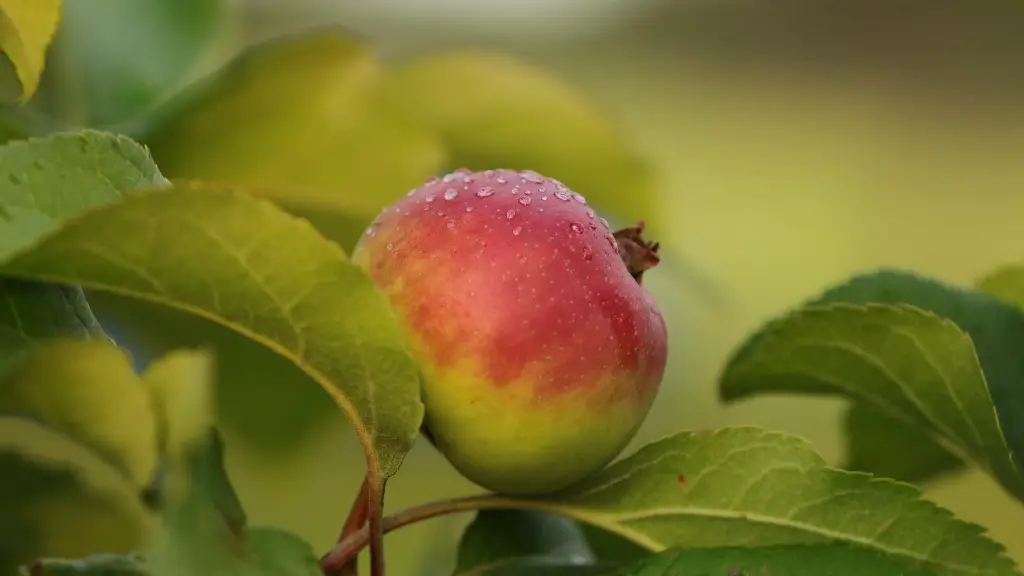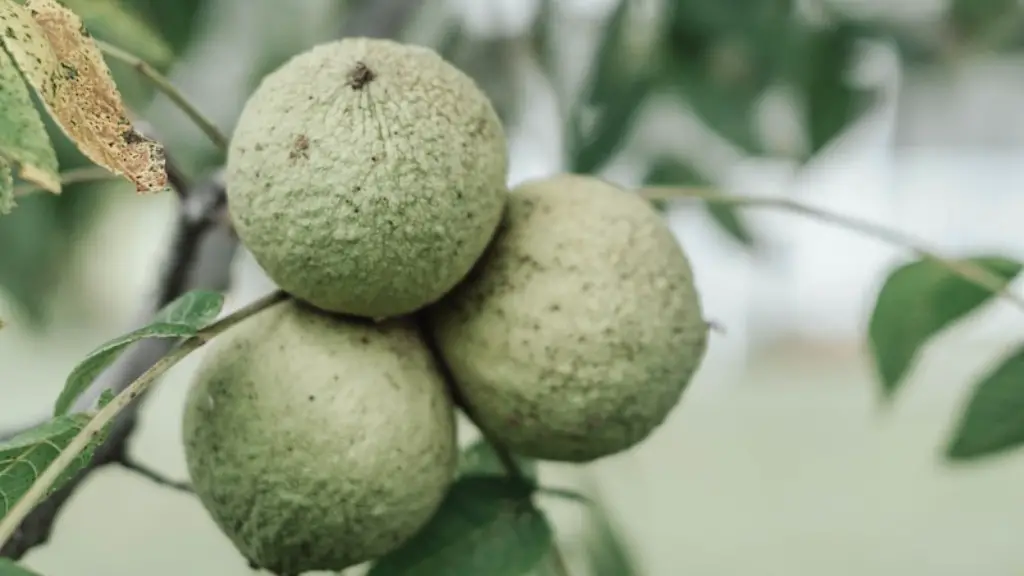The humble Avocado tree has been a valuable food source worldwide for centuries, and avocado farmers everywhere have harnessed its power to produce the creamy, tasty fruit which forms an integral part of many diets. But with this power comes a burning question: How long does an avocado tree take to produce avocados?
The exact answer depends on several factors, including the variety of tree planted, the level of care given, and the local climate – but one thing is for certain; growing an avocado tree from seed does not yield a bumper crop of avocados quickly!
According to expert sources, once planted in the ground, it may take up to five long years for a seed grown avocado tree to bear fruit, with an optimal yield being reached at around seven years. For this reason, many people choose to purchase nursery seedlings, which can take up to three years to produce avocados.
Nevertheless, it is important to note that weather affects the process in numerous ways: too much rain can cause the plants to suffer root rot, while too little can stunt growth and reduce yield. In addition, extreme temperatures can also have a damaging affect, meaning the length of time until you can start picking avocados can be prolonged considerably.
A well cared for avocado tree, watered and fertilised regularly, can provide many years of yummy fruit – but these years of waiting for the first crop can be disheartening for eager gardeners. By following through some research and advice from experts, you can speed up the process and increase the chances of a healthy crop.
Nursery seedlings used to be the only way to go if you wanted to have avocados sooner, but with the development of seed propagation techniques, you can now sow the seeds directly into the ground, with the potential to have the tree fruiting in around three years’ time. Of course, this will depend on the variety, soil and growing conditions.
Another major factor that affects the rate of growth and yield of an avocado tree is pruning. While this may seem counter-intuitive, pruning at the right times can actually stimulate the growth of new, fruit-bearing branches which in turn leads to more avocados. Proper pruning is an art, and unless you are confident in your abilities it is best to seek professional help from a certified arborist.
Soil Types for Avocado Trees
The type of soil you use for planting your avocados will, in most cases, have the most significant impact on the health of your tree and the abundance of the crop. If you select soil that is too heavy, such as clay, it may not have the structure to support the roots efficiently, resulting in a slower growth rate and ultimately less fruit.
On the other hand, light soils tend to be too crumbly, leaving the roots exposed and vulnerable to droughts, disease, pests and hungry animals. Therefore, it is always recommended to find soil that sits in between these two extremes – and doesn’t drain too quickly.
While finding the right soil mix takes some trial and error and experimentation, the nutrients it offers the avocado tree roots are an important factor in nutrient uptake. If possible, adding organic matter will help improve drainage, oxygen levels and water holding capabilities: all essential for healthy avocado tree growth.
How Weather Impacts Avocado Tree Growth
Climate plays a major role in the abundance of avocados produced by any tree. The optimal temperature for growth varies according to the species of avocado; Hass, for instance, require an average of 21°C days, with temperatures dropping to around 14°C at night.
Altitude too plays an important role, as an avocado tree grown at a higher elevation will require a longer growing season to reach its optimal yield. Low temperatures at night can slow the plant’s growth and reduce the fruit’s sugar content, while high temperatures during the day can cause photosynthesis to become stunted, leading to reduced fruiting.
Taking into account all of the variables, the best way to enjoy your avocado tree is to be prepared; doing your research and ensuring the right conditions are met is the only sure-fire way to yield bumper harvests of delicious avocados.
Pests and Disease Affecting Avocados
It goes without saying that, no matter how good a gardener you are, your tree can potentially still suffer from various diseases or be attacked by pests. As with many other fruit trees, avocados are affected by root rot, nutrient deficiencies, fungus and bacteria, blackspot, and a variety of other maladies.
In order to protect your tree from disease and pest infestations, you need to ensure the soil is healthy, free of weeds and pests, and you should use a quality fungicide to help keep the tree in good condition.
In addition, it is recommended you inspect the soil and leaves of the tree periodically to check for any signs of infection and act quickly upon noticing any. If the disease is left untreated, it can lead to reduced yields and unsellable fruit.
Harvesting and Storing the Avocados
Once the avocados finally arrive, you need to make sure they are harvested correctly. As a rule of thumb, most will be mature and ready to pick after 4-6 weeks of fruit set. However, don’t be afraid to test them frequently to ensure they do not over-ripen or go bad when left on the tree.
Once harvested, it is important to store the avocados in a cool, dark place where they will keep for a few weeks. If you want to store them for longer, there are a few options: freezing, pickling and even cooking with them. It is also possible to preserve avocados by converting them into a powder which can then be added to smoothies, salads and other creations.
Nutritional Benefits of Avocado
Finally, we need to consider the amazing health benefits of avocado; high in dietary fibre, fatty acids, and vitamins and minerals such as Vitamins B, C and K, avocados are not just delicious but also incredibly nutritious. Eating just one will provide approximately 20 essential nutrients, making it one of the world’s most nutrient-dense fruits.
Moreover, experts have described avocados as a superfood, due to its numerous health benefits – for instance, the oil contained in the fruit can lower cholesterol, and the fatty acids can help keep your blood pressure in check.
Overall, even though planting an avocado tree may take several years before you can enjoy the fruits of your labour, the high-yield and incredibly nutritional value of avocados make the wait worth it.
Factors Impacting Avocado Yield
As mentioned above, there are several factors that can influence the yield of an avocado tree, and planting the right variety is key.For instance,choosing a variety that experiences alternating wet and dry spells, such as Hass, can extend the ripening season, enabling you to gather more fruits from the tree.
In addition, selecting a variety that flowers late and produces fruit in mid-summer to fall can help you reach higher yields, even in colder or colder-lean areas. Also, some trees are self-fertile, meaning they do not require companion trees for pollination.
Finally, it is good practice to use mulch to reduce the temperature of the soil around the tree: this helps stimulate root growth and also reduces moisture loss, which can help reduce avocado fruit splitting and rotting.
Common Characteristics of Avocado Trees
Avocado trees come in a variety of shapes and sizes – with some growing up to tall, while others can stay small and compact. According to experts, avocado trees can reach heights of up to 80 feet tall and spread up to 30 feet wide – however, with pruning they can be kept to around 20-40 feet tall.
The leaves of the tree are glossy, thick and leathery, and the fruits can vary in size, shape and colour depending on the variety. The seed inside the centre of the avocado can be powdery, or hard and covered in a brown, woody skin.
General Care for Avocado Trees
It is important to note that avocado trees generally thrive in a sunny, well-drained area. The soil should also be well aerated, and preferably natural and unamended as chemical fertilisers can cause the tree to grow rapidly. As a result, it is important to select a well-irrigated location for optimum growth.
When cultivating an avocado tree, it is important to keep it free of weeds and keep the soil evenly moist throughout the growing season. In addition, fertilisation may be required depending on the age and size of the tree: too much can cause ‘burnout’ and reduced yields if used too frequently, while too little can both stunt growth and reduce the quality of the fruit.
Moreover, keep an eye out for pests and diseases, inspect the tree regularly, and prune as needed to promote healthy growth. Doing so will help to keep your avocado tree in peak condition and more likely to yield a bountiful harvest!



